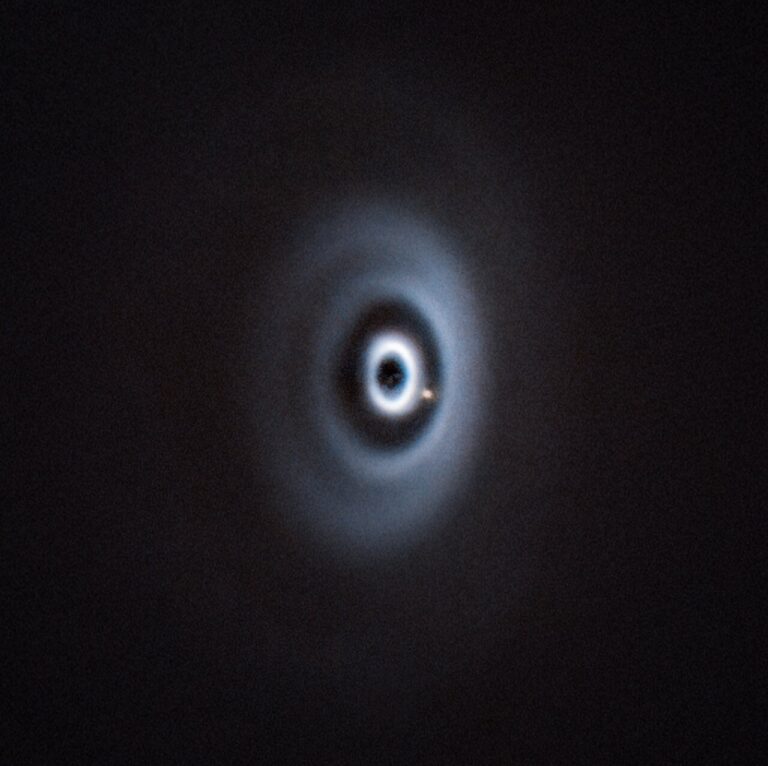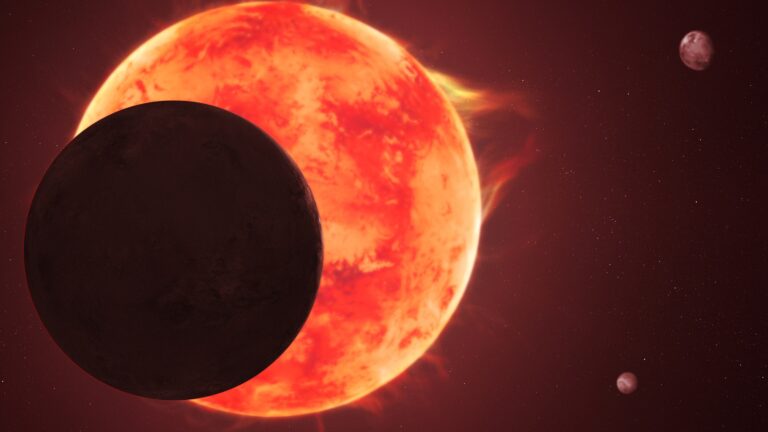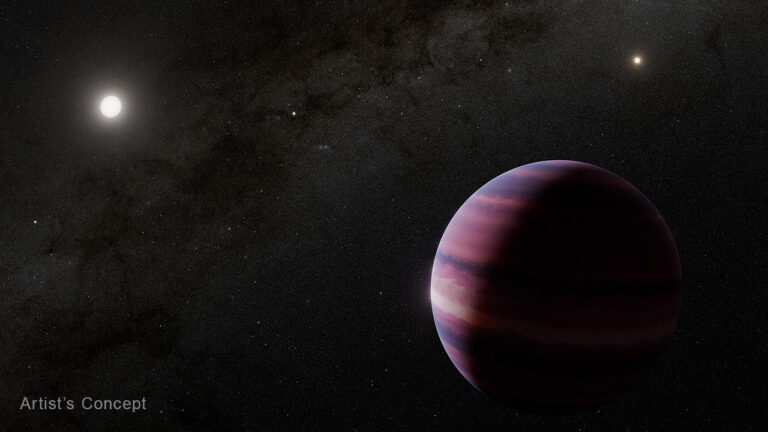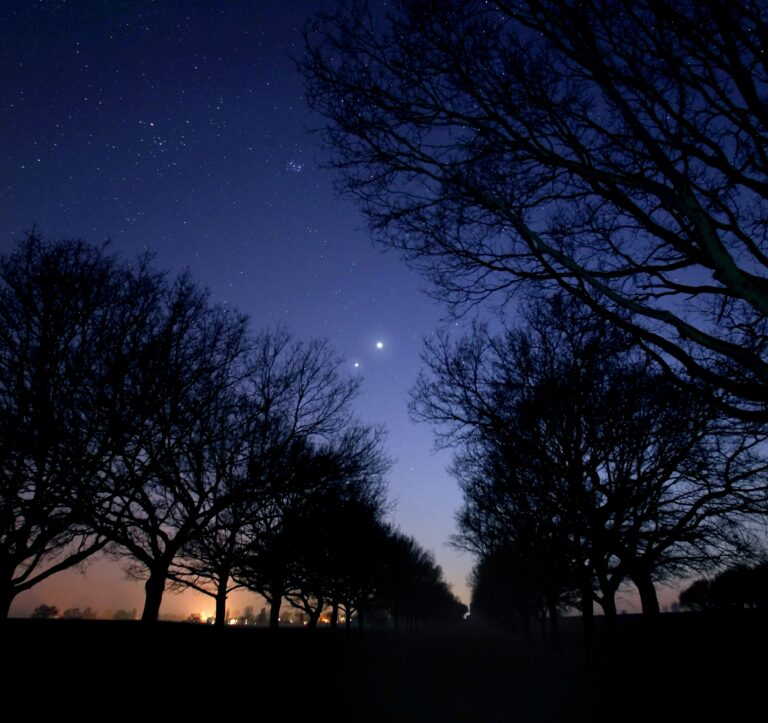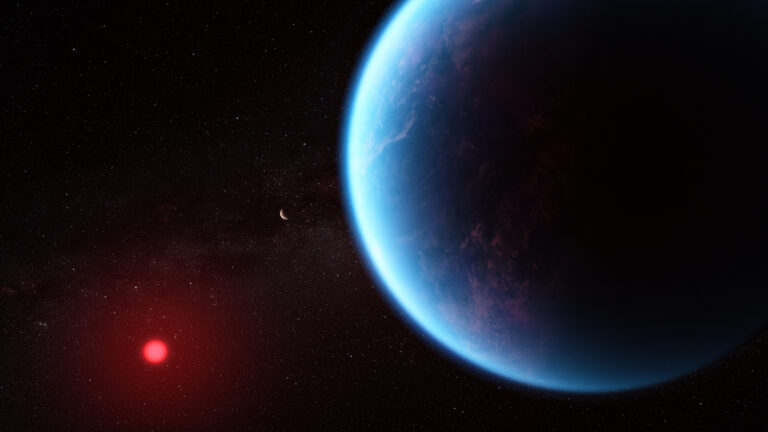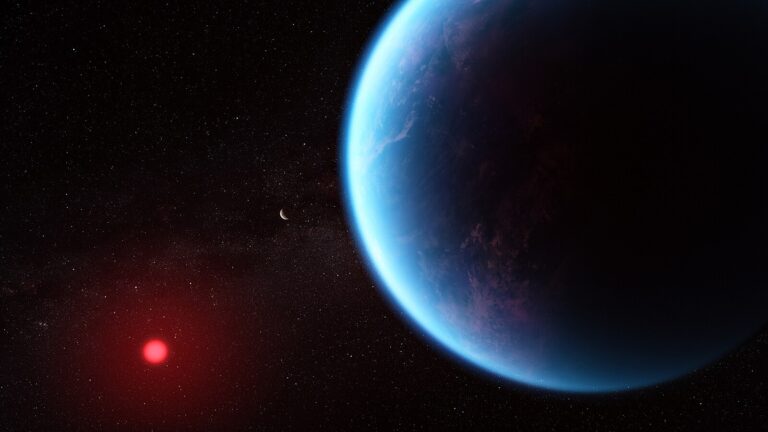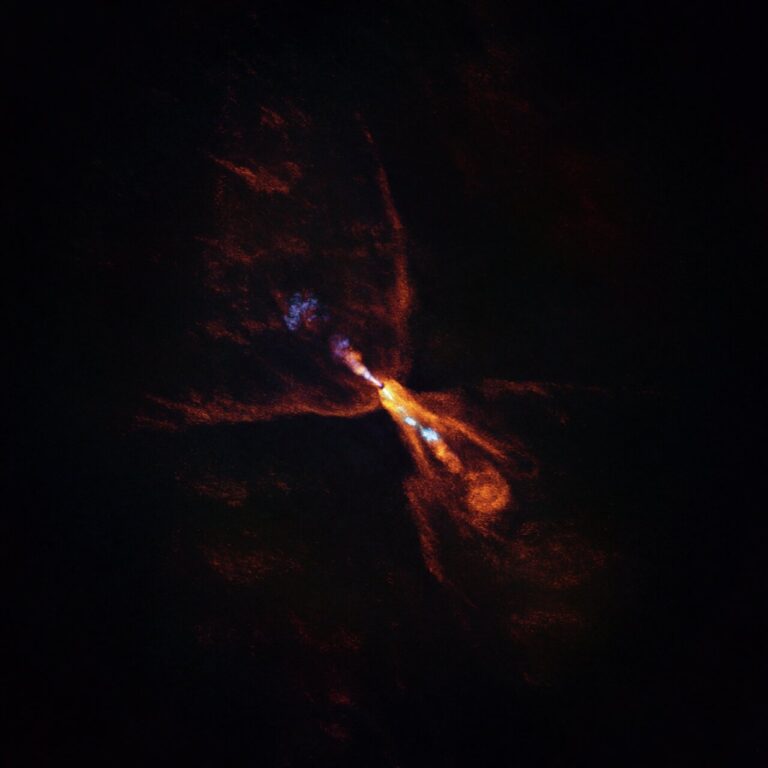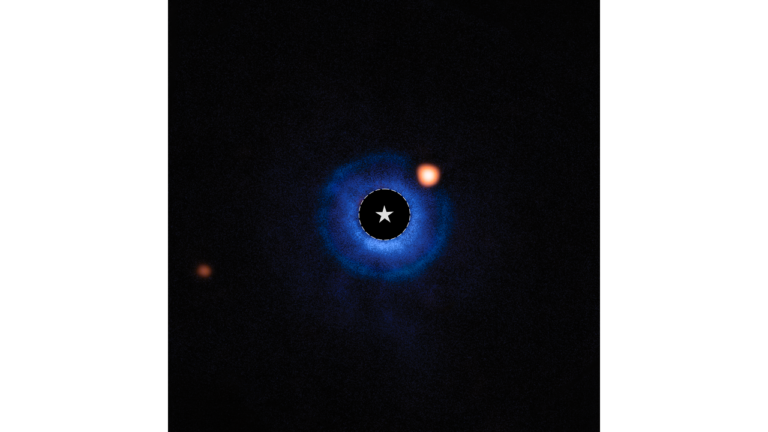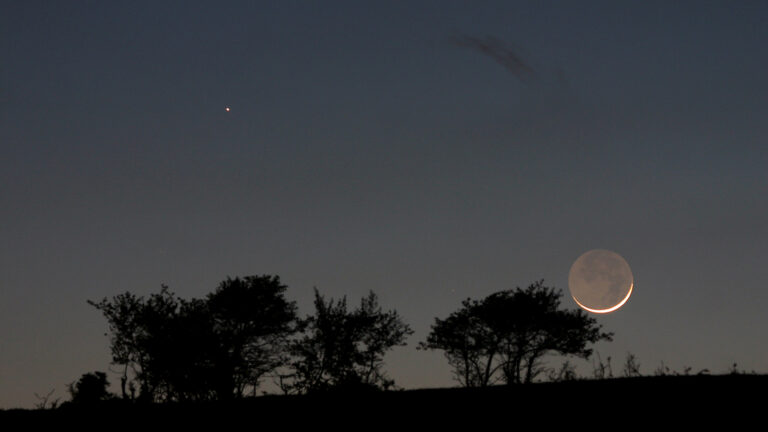Key Takeaways:
An international team led by Sascha Quanz of ETH Zurich, Switzerland, has studied the disk of gas and dust that surrounds the young star HD 100546, a relatively nearby neighbor located 335 light-years from Earth. The group was surprised to find what seems to be a planet in the process of forming, still embedded in the disk of material around the young star. The candidate planet would be a gas giant similar to Jupiter.
“So far, planet formation has mostly been a topic tackled by computer simulations,” says Sascha Quanz. “If our discovery is indeed a forming planet, then for the first time scientists will be able to study the planet formation process and the interaction of a forming planet and its natal environment empirically at a very early stage.”
HD 100546 is a well-studied object, and it has already been suggested that a giant planet orbits about six times further from the star than the Earth is from the Sun. The newly found planet candidate is located in the outer regions of the system, about 10 times farther out.
According to current theory, giant planets grow by capturing some of the gas and dust that remains after the formation of a star. The astronomers have spotted several features in the new image of the disk around HD 100546 that support this protoplanet hypothesis. Structures in the dusty circumstellar disk, which could be caused by interactions between the planet and the disk, were revealed close to the detected protoplanet. Also, there are indications that the surroundings of the protoplanet are potentially heated up by the formation process.
Adam Amara, another member of the team, is enthusiastic about the finding. “Exoplanet research is one of the most exciting new frontiers in astronomy, and direct imaging of planets is still a new field, greatly benefiting from recent improvements in instruments and data analysis methods,” he said. “In this research, we used data analysis techniques developed for cosmological research, showing that cross-fertilization of ideas between fields can lead to extraordinary progress.”
Although the protoplanet is the most likely explanation for the observations, the results of this study require follow-up observations to confirm the existence of the planet and discard other plausible scenarios. Among other explanations, it is possible, although unlikely, that the detected signal could have come from a background source. It is also possible that the newly detected object might not be a protoplanet, but a fully formed planet that was ejected from its original orbit closer to the star. When the new object around HD 100546 is confirmed to be a forming planet embedded in its parent disk of gas and dust, it will become an unique laboratory in which to study the formation process of a new planetary system.



